Articles and Features
Art Movement: De Stijl
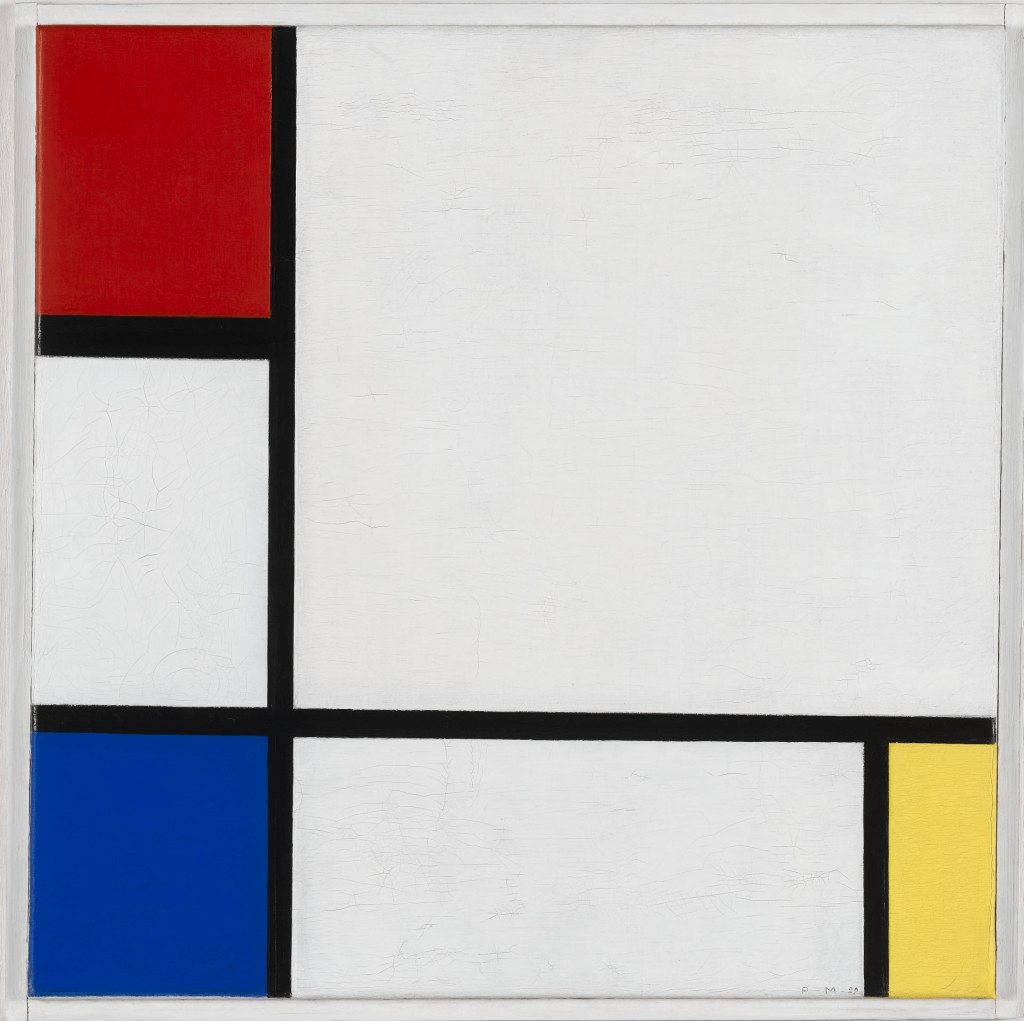
By Shira Wolfe
By the unification of architecture, sculpture and painting a new plastic reality will be created – Piet Mondrian
What is De Stijl?
In 1917, two pioneering Dutch abstract artists, Piet Mondrian and Theo van Doesburg, founded De Stijl. Originally a publication, De Stijl, which means Style in Dutch, was a magazine in which the artists promoted their ideas on art and abstraction. De Stijl soon became a full-fledged movement which advocated a visual language consisting of precise geometric forms (primarily straight lines, squares and rectangles) and primary colours.
Key period: 1917 – 1931
Key regions: The Netherlands
Key words: geometric forms, primary colours, form and function, Neo-plasticism, spirituality, return to order
Key artists: Piet Mondrian, Theo van Doesburg, Bart van der Leck, Vantongerloo, Vordemberge-Gildewart, Gerrit Rietveld, JJP Oud
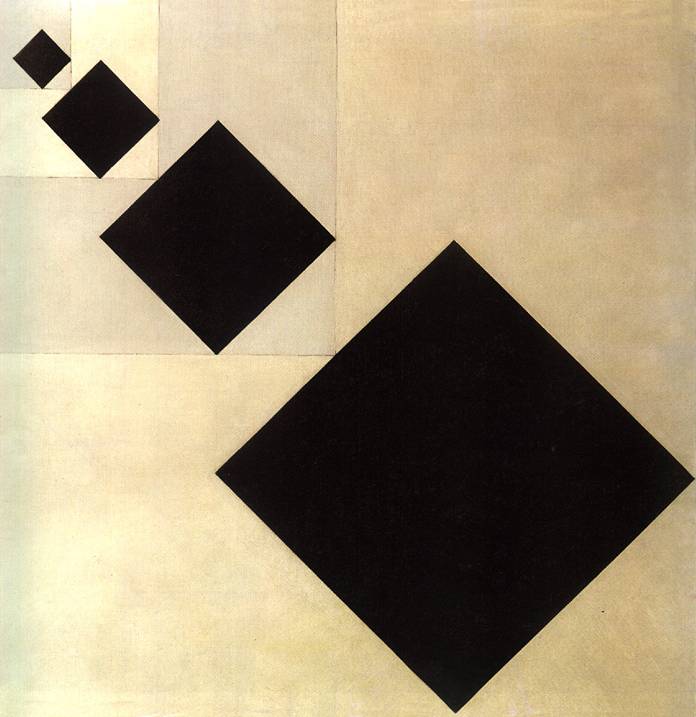
“We speak of concrete and not abstract painting because nothing is more concrete, more real than a line, a color, a surface.”
Theo van Doesburg
The Key Ideas of De Stijl
Like many other avant-garde art movements at the time, De Stijl was a reaction against the horrors of World War I. It was utopian in nature in the sense that the members of De Stijl believed art to have a transformative power. For them, art was a means towards social and spiritual redemption.
De Stijl art was seen as a universal visual language which fit with what its artists wanted for the modern era: a new, spiritualised world order. The visual language of the De Stijl artists consisted of geometric forms which were precisely rendered. They were searching for the laws governing the harmony of the world, and wanted to reveal them through their art – their lines, squares and rectangles in primary colours.
The artists of De Stijl worked in a wide range of media across the fine and applied arts. They aimed for an ideal fusion of form and function, therefore not only focusing on painting and sculpture but extending their artistic vision to all other art forms including literature, music, typography and industrial design.
Neo-plasticism
Piet Mondrian came up with the term “de nieuwe beelding”, which became known internationally as Neo-plasticism. Mondrian published his essay Neo-Plasticism in Pictorial Art in De Stijl, in which he wrote:
“As a pure representation of the human mind, art will express itself in an aesthetically purified, that is to say, abstract form. The new plastic idea cannot therefore, take the form of a natural or concrete representation – this new plastic idea will ignore the particulars of appearance, that is to say, natural form and colour. On the contrary it should find its expression in the abstraction of form and colour, that is to say, in the straight line and the clearly defined primary colour.”
Mondrian saw Neo-plasticism as an ideal art in which the basic elements of painting were used in their purest and most fundamental state. Only primary colours, non-colours, squares, rectangles, straight, horizontal and vertical lines were used. Until his split from De Stijl in 1923, Neo-plasticism also applied to the work of other artists in De Stijl.
Disagreements Between Mondrian and Van Doesburg
Mondrian famously withdrew from De Stijl in 1923, outraged at Van Doesburg’s adoption of diagonal elements in his work. Van Doesburg wanted to add more variety, movement and energy to the movement and had therefore developed Elementarism, with which he attempted to modify the in his view dogmatic nature of Mondrian’s Neo-plasticism by introducing the diagonal. Mondrian refused to accept this break with purity and precision, deeming it artistic heresy on Van Doesburg’s part. Mondrian continued in his way, separate from De Stijl, finally ending up in New York in 1940. Van Doesburg continued the publication until his death in 1931.
But Van Doesburg had been interested in exploring different ways long before the dramatic diagonal break. In fact, he was a core member of De Stijl on the one hand, while he was a passionate and active member of DADA on the other. As early as 1920, Van Doesburg published a DADA poem in De Stijl as his DADA alter ego I.K. Bonset. In 1923, Van Doesburg and his wife Nelly, who had just returned from Germany, went on a DADA tour through The Netherlands with Kurt Schwitters, performing together in 10 different cities.
Iconic Artworks of De Stijl
Piet Mondrian’s Composition II in Red, Blue, and Yellow, 1930
This is one of Mondrian’s artworks in his Composition series, and represents the height of Mondrian’s purity and sobriety in his art. Thick black lines cut between colour fields, creating squares and rectangles of only primary colours and non-colours.
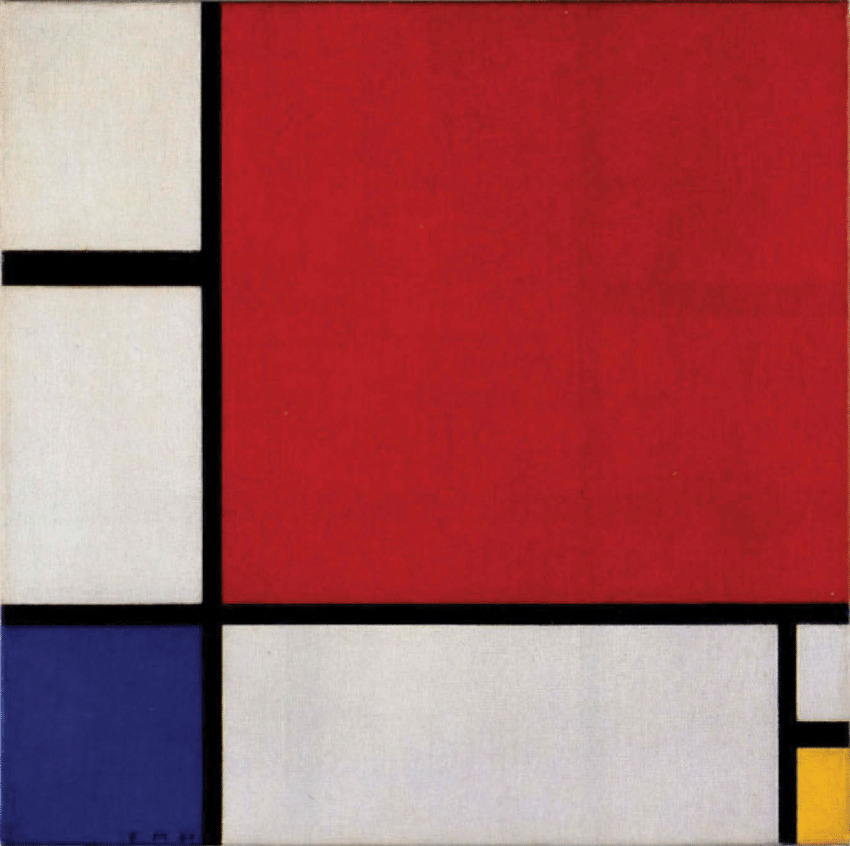
Theo van Doesburg’s Rhythm of a Russian Dance, 1918
Van Doesburg’s use of only primary colours and rectangles created by straight horizontal and vertical lines is a reflection of his wish to deconstruct painting to the most simple forms and colours. A Russian dancer is portrayed in the most stripped-down fashion.
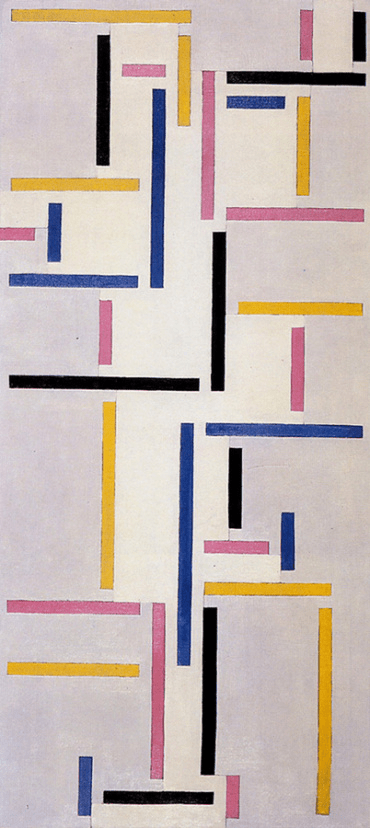
Theo van Doesburg’s Counter Composition V, 1924
Van Doesburg began introducing his Counter Compositions in 1924. These signature works embodied his desire to move beyond the constrictions of De Stijl by introducing diagonal lines. In this Counter Composition V, he also added a grey triangle to the otherwise strictly primary colours and non-colours.
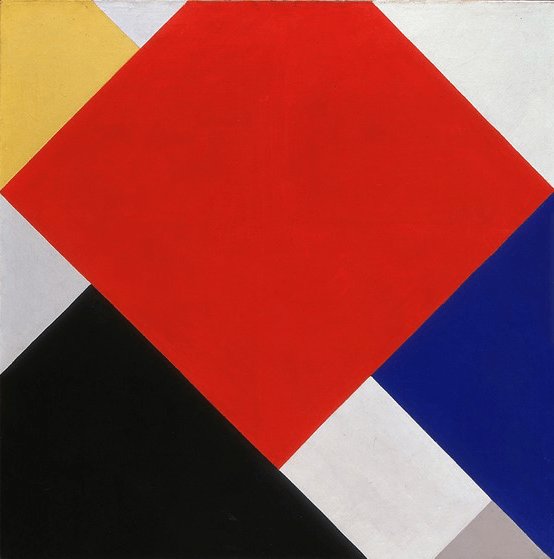
Gerrit Rietveld’s Rietveld-Schröder House, 1924
Gerrit Rietveld designed his Rietveld-Schröder House in 1924, following the specific wishes of Widow Truus Schröder-Schräder to have a house where she could mourn the death of her husband openly with her children and live in a way that broke with all the traditions of the time. She wanted simplicity and a space that freed, rather than constrained her. Together, they worked together to come up with the perfect design for the house. In keeping with De Stijl, Rietveld created fluid transitions between interior and exterior using clean horizontal and vertical lines, primary colours and non-colours.
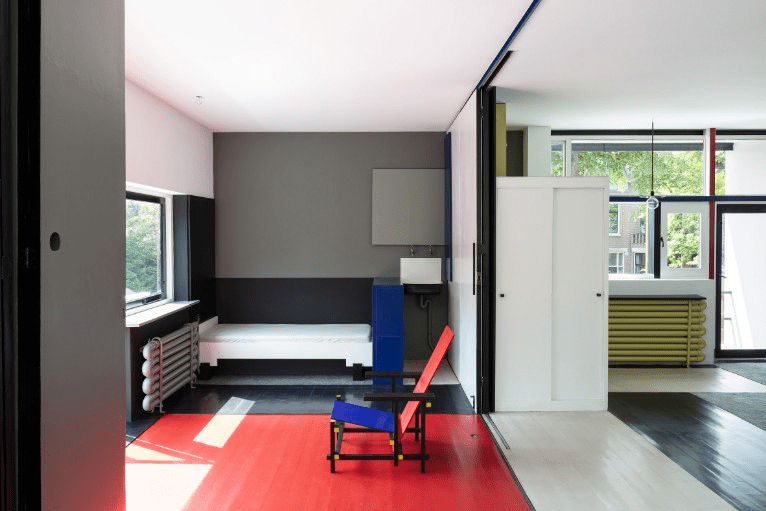
The Legacy of De Stijl and its Influence on Other Art Movements
De Stijl significantly influenced other art movements. For one, several of the members of De Stijl, including Theo van Doesburg, taught at the Bauhaus. Therefore, it had a major influence on Bauhaus architecture and design. Furthermore, the geometric visual language and the idea of form following function made a significant impact on the architectural movement from the ‘20s and ‘30s known as The International Style, its main proponents being Mies van der Rohe, Walter Gropius and Le Corbusier. In addition, many of Rietveld’s buildings carried elements of De Stijl long after the movement had ended.
One can even trace the influence of De Stijl all the way to the United States, where Mondrian had ended up. Abstract Expressionists, Hard-edge painters and Minimalists each in their own way found inspiration in the Dutch abstraction pioneered by Mondrian and Van Doesburg.
Finally, De Stijl has been referenced widely throughout pop culture (think of The White Stripes album De Stijl) and has been incorporated into high fashion in the shape of Yves Saint Laurent’s 1965 Mondrian Dress and Prada’s 2011 AW Collection. This is an art movement that continues to translate into all creative fields, even today.
De Stijl, meaning ‘Style’ was a modern art movement developed in the Netherlands in the early twentieth century. Encompassing painting, architecture and design, de Stijl was founded by Piet Mondrian and Theo van Doesberg in 1917 based upon strict ideals of vertical and horizontal geometry.
Was De Stijl Abstract?
De Stijl advocated a minimal, pared down aesthetic consisting entirely of non-objective form, premised mainly upon the most basic visual elements of horizontal and vertical line and primary colours.
Where did de Stijl originate?
De Stijl originated in Leiden, in the Netherlands, in 1917.
Who are the main De Stijl artists?
De Stijl was founded by Piet Mondrian and Theo Van Doesberg, but also included the artchitect Gerrit Rietveld.